Common Lawn Diseases
Reading time: 6 minutesMost lawn diseases are caused by fungi that occur naturally, however only a few species of fungi actually cause disease symptoms.
The vast majority are beneficial and contribute to the breakdown of organic matter into useable nutrients that the grass plants can absorb and use as food. Symptoms of disease in a lawn can manifest in a number of ways, depending on the fungi. You might see brown spots, dead rings, irregular patches growing on grass blades, or roots that appear black and rotten.
Red Thread
Red thread appears on turf grasses as small to light pink or red patches. Infected patches of grass turn light tan, and the leaf tips or margins may be covered with fine pink to red threads, giving the turf an overall pink coloration.
Most grass species are affected, but fine leaf fescues and perennial rye grasses are often severely damaged. Development of this disease is favored by prolonged periods of moisture (rain or heavy dew), or watering in late evening. Increased severity occurs on lawns that have a high thatch layer, as well as lawns that are nutrient deficient. Red thread can be spread by walking over infected areas to non-infected areas, as well as mowing and leaving the grass clippings on the lawn. Red thread is best controlled with a combination of proper cultural practices and fertilization.
- Water only in early morning and deeply once a week.
- Do not allow the turf to get excessively dry.
- Reduce the thatch layer in the lawn by aerating and top dressing.
- Overseed the lawn with Kentucky bluegrass.
- Bag all the grass clippings.
- Maintain a regular fertilization program
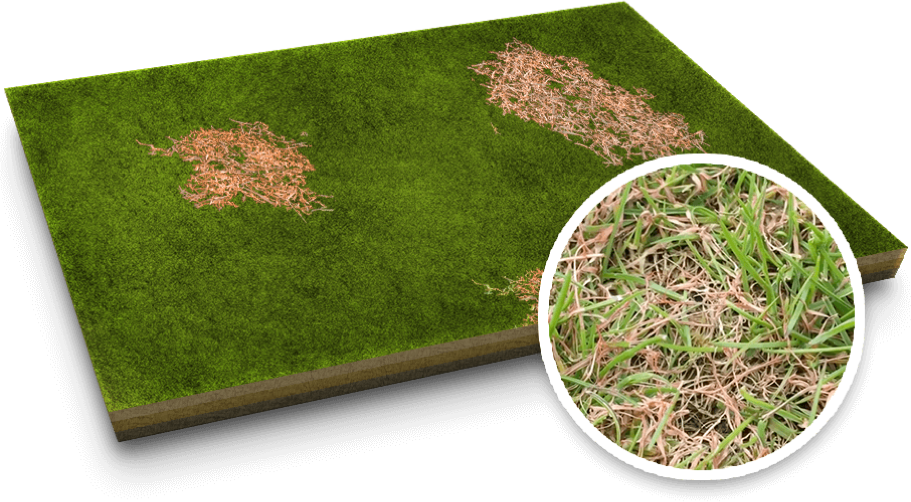
Powdery Mildew
Powdery Mildew affects nearly all northern grasses but is only a major problem on Kentucky bluegrass. The individual blades of grass look like they have been dusted with flour.
Closer inspection reveals a white, powdery growth primarily on the upper surface of the leaf. Advanced stages of the disease will cover the whole leaf with mycelium, eventually turning the foliage yellowish-orange. As the disease progresses, turf grass blades may wither and die, as well the grass plant becomes more susceptible to other stresses and diseases.
To help control or alleviate this disease the best solution is to use these cultural practices to help fix the problem:
- In shady areas, change the species of grass to more shade tolerant variety.
- Avoid watering at night.
- Improve air circulation to affected areas.
- Reduce the amount of shade the grass is getting. Prune surrounding trees and shrubs to allow light penetration.
- Raise your mowing height to 3 inches or higher.
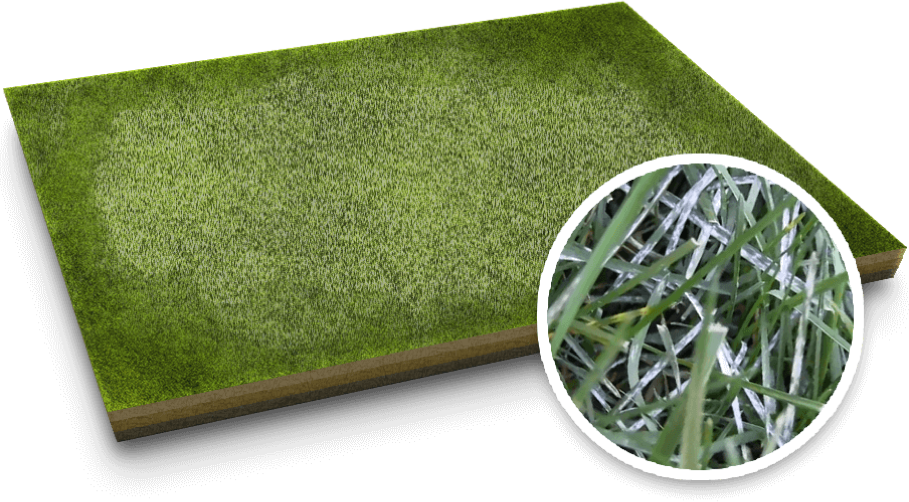
Dollar Spot
Dollar spot is a common disease of all turf grasses in the summer months. Dollar spot gets its name from the size of the affected area of the lawn.
There is a general blighted appearance, and individual leaf blades have hourglass legions with a bleached center, sunken edges and brown borders. Infected leaf blades eventually die leading to quarter or dollar sized dead spots in the lawn.
Dollar spot is more severe on lawns that do not receive the right amount of fertilizer. Warm days and nights with heavy morning dew enhance this disease. Dollar spot can be managed by using the following techniques:
- Fertilize your lawn regularly.
- Control the thatch and compaction in the lawn. Aeration will help.
- Promote good air circulation and light penetration by pruning your landscape plantings.
- Avoid drought conditions and night watering.
- Keep mowing and other activities to a minimum when the grass is wet.
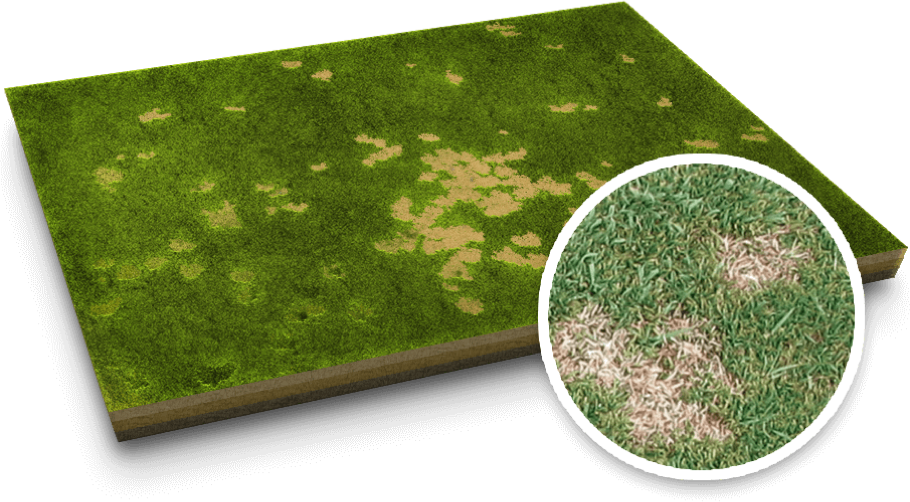
Fairy Ring
Fairy Rings are a common problem in residential lawns. The disease is caused by soil-borne fungi, which survive by feeding on organic matter.
Mushrooms are the fruiting bodies of this fungus. In many cases fairy ring begins by decomposing a large underground source of organic matter. Nutrients are released, especially nitrogen, which accounts for the dark green color. As the fungus progresses, it grows rapidly sending many fungal strands outward, decomposing organic matter in its path. Damage to lawns is caused in three ways:
- Fungal strands fill pores, depriving grass roots of water and oxygen.
- Release of excess nitrogen through the breakdown of organic matter causing uncontrollable top growth and burn.
- Some fairy ring fungi emit by-products which are toxic to grass plants.
Treatment Options
There is no sure control for fairy ring. Regular fertilization, aeration and overseeding will help minimize the impact. Heavily watering the area can provide some temporary relief to the surrounding turf. If you catch the ring when it is small you may get control by digging out the soil. This is done by removing all the soil within the ring and extending outside the ring removing the soil as if it were an entire circle. Add fresh topsoil and then the area can be seeded or sodded.
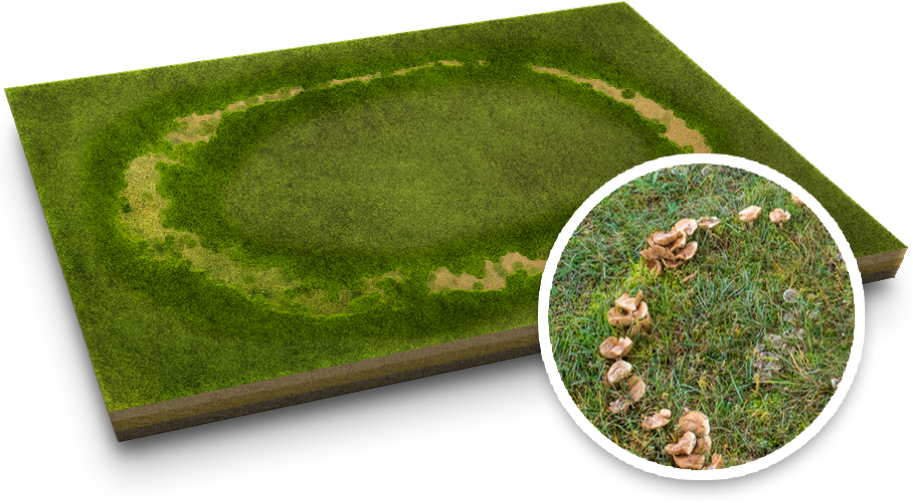
Snow Mold
Snow mold will infect most cool season grasses. Including Kentucky Bluegrass, Perennial Ryegrass and Fescues. The damage is visible in the spring once the snow has melted.
The damage to turf has a bleached or scalded appearance and will range in sizes from 10-20 cm, but often overlaps to form large irregular patches. Snow coverage of three months or longer is required for heavy damage to the lawn. This disease is common in our region due to our long winter months.
The best way to minimize is to follow proper cultural practices:
- Minimize thatch layer in the lawn, aeration will help.
- Prevent succulent growth in late fall.
- Prevent large drifts of snow on turf. You may have to break apart large drifts and distribute the snow across the lawn.
- Try to prevent snow compaction, restrict the amount of walking on the turf in the winter months.
- In the spring, after damage has occurred, rake matted areas to encourage drying.
- Promote new growth by fertilizing the lawn.
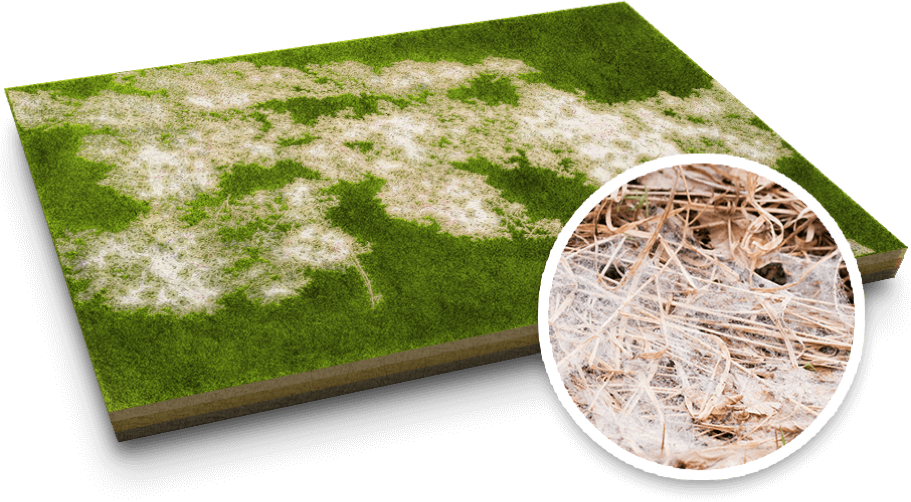
Prevention & Treatment
DON'T OVER WATER & WATER IN THE MORNING
Overwatering or watering late in the day can cause the lawn to stay wet all night. Allow the surface of the lawn to dry out between your waterings. Watering in the morning allows your grass to dry in the heat of the day and actively uptake the water while it is growing. A wet environment creates an environment perfect for fungal diseases to spread.
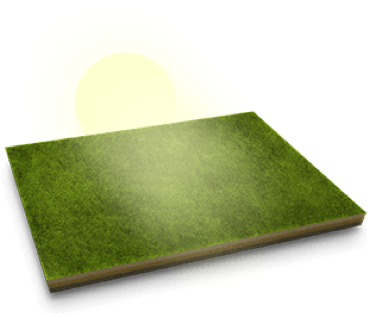
SHARPEN YOUR MOWER BLADE.
A dull mower causes damage to leaf blades. The shredded blade does not heal well and is easily infected by disease. These shredded grass blades also turn brown and make your lawn appear unhealthy.
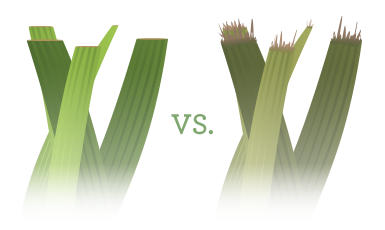
MOW IT RIGHT.
Avoid cutting your grass too low as this will stress out the lawn and make it more susceptible to disease. Also, mow frequently enough so that only one third of the leaf blade is removed each time you mow. If you wait too long and then cut low, the lawn can go into a state of shock, making the lawn more disease susceptible.
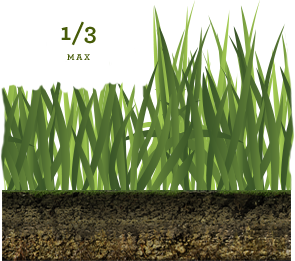
AERATION.
Aeration will reduce soil compaction and allow water and nutrients to move deeper into the soil, encouraging deeper roots. This results in a healthier lawn better able to resist disease.
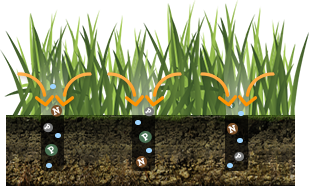
OVERSEEDING.
If your lawn suffers from a reoccurring disease problem, then we recommend annual overseeding with new disease resistant cultivars.
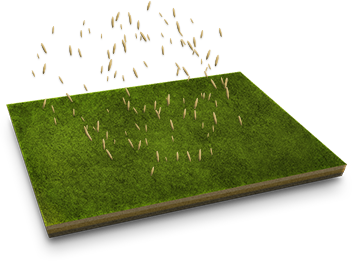
Our GreenKeepers can help!
All of our packages enhance the look and overall health of your lawn. A healthy lawn is much more resistant to all the above-mentioned problems, as well as weeds.

